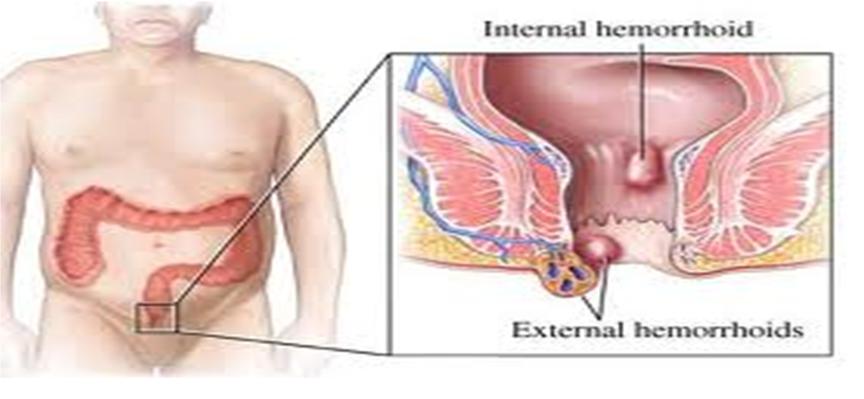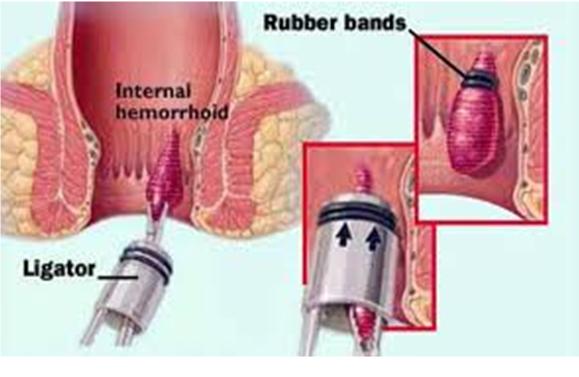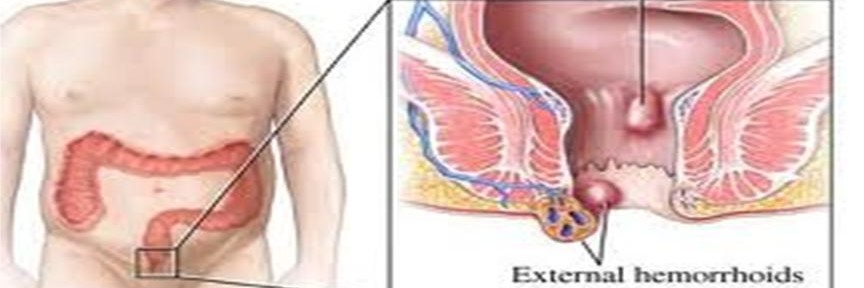Haemorrhoids are considered to be internal or external. Internal haemorrhoids are collections of blood vessels, which form into “3 cushions” in varying positions around the anal canal. External haemorhoids are really small skin tags which protude from the anal verge.

Symptoms
The commonest symptom of haemorrhoids is bright bleeding during and after a bowel motion. Internal haemorrhoids may also prolapse (protrude) and cause some degree of discomfort and irritation. External haemorrhoids may make cleaning the anal area difficult and also act as a source of irritation. Occasionally a blood vessel may burst under the skin and cause a painful and swelling which is referred to as a thrombosed external haemorrhoid or perianal haematoma. This latter condition is common in athletes or individuals who may strain excessively at stool. It is a self-limiting condition, but may often be improved by a minor procedure, which can be undertaken in the office. Thrombosed prolapsed haemorrhoids refer to the complications of internal haemorrhoids which may tend to protrude from the anus after a bowel motion and not return to the lower part of the bowel. This painful and distressing condition sometimes requires semi-urgent operation.
Treatment
The treatment of haemorrhoids depends on their severity. Symptoms from haemorrhoids may improve by an increased amount of fibre in the diet. Ointments and suppositories may also be helpful. Large haemorrhoids may require the use of rubber bands and very large haemorrhoids may require haemorrhoidectomy (surgical removal). Freezing, infra-red and laser therapy to haemorrhoids are just differing methods of using energy to remove a haemorrhoid. They have no particular advantage over “normal” haemorrhoidectomy.
Rubber Band Ligation of Haemorrhoids
Your haemorrhoids have been treated by application of small rubber bands which will cut off the nutritional blood supply to the haemorrhoid making it shrink and fall off any time up to fourteen days after the procedure. Often some bleeding may occur during this period. If the bleeding is profuse and there are clots I should be contacted.?It is not uncommon to get some lower bowel discomfort after application of rubber bands but usually this will settle with analgesia such as Panadol or Panadeine. In addition to discomfort there may be a sensation of a desire to evacuate the bowel. This will usually settle down over a 24-48 hour period and straining may cause some aggravation during this time. It is adviable for you to take laxatives, such as Agarol 20-30ml for up to a week following your procedure. After rubber band ligation there is no need to change your diet and you may resume normal activity, provided you are comfortable. Sometimes rubber band ligation is performed during the course of another procedure under general anaesthesia and you should not drive for the rest of the day.

